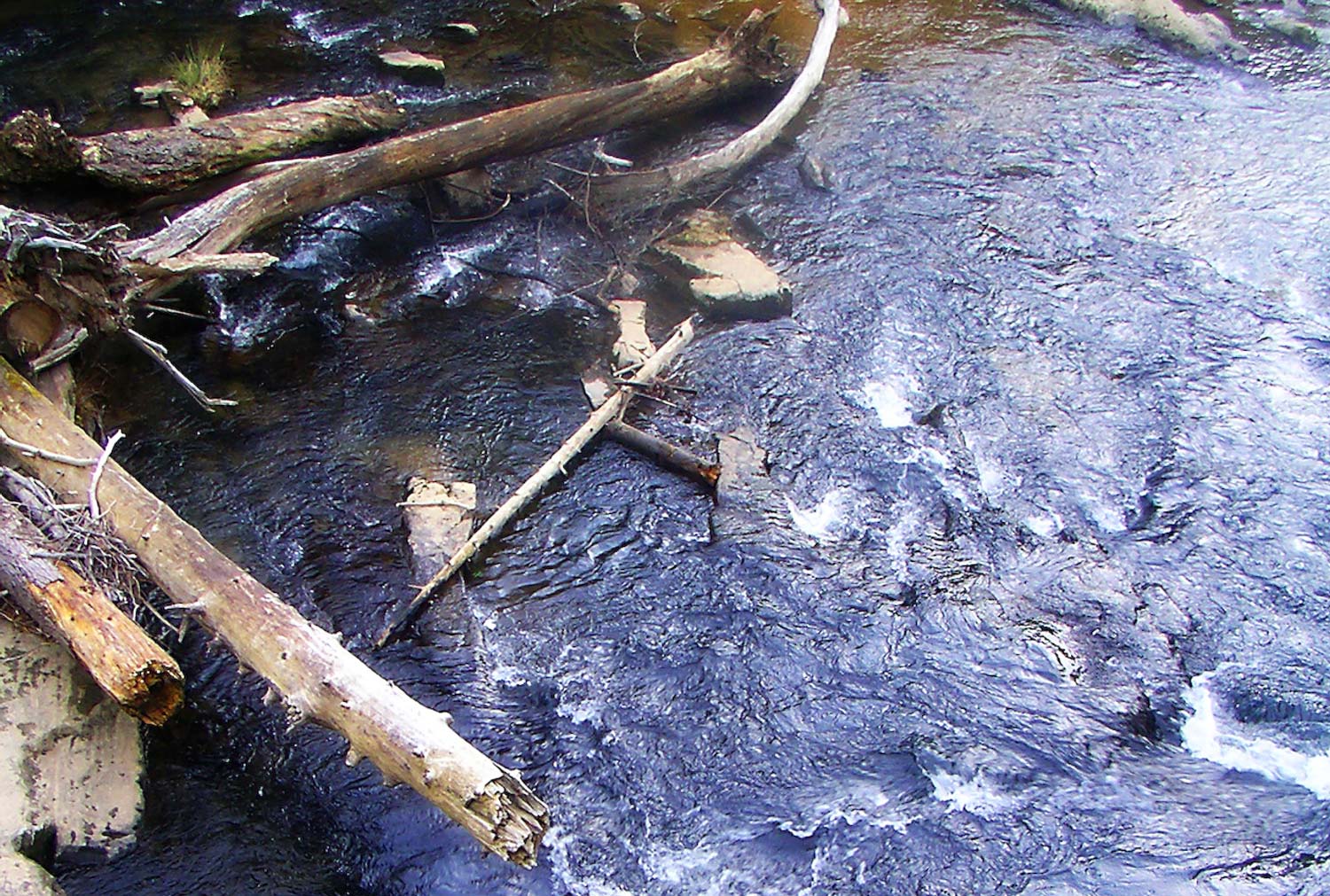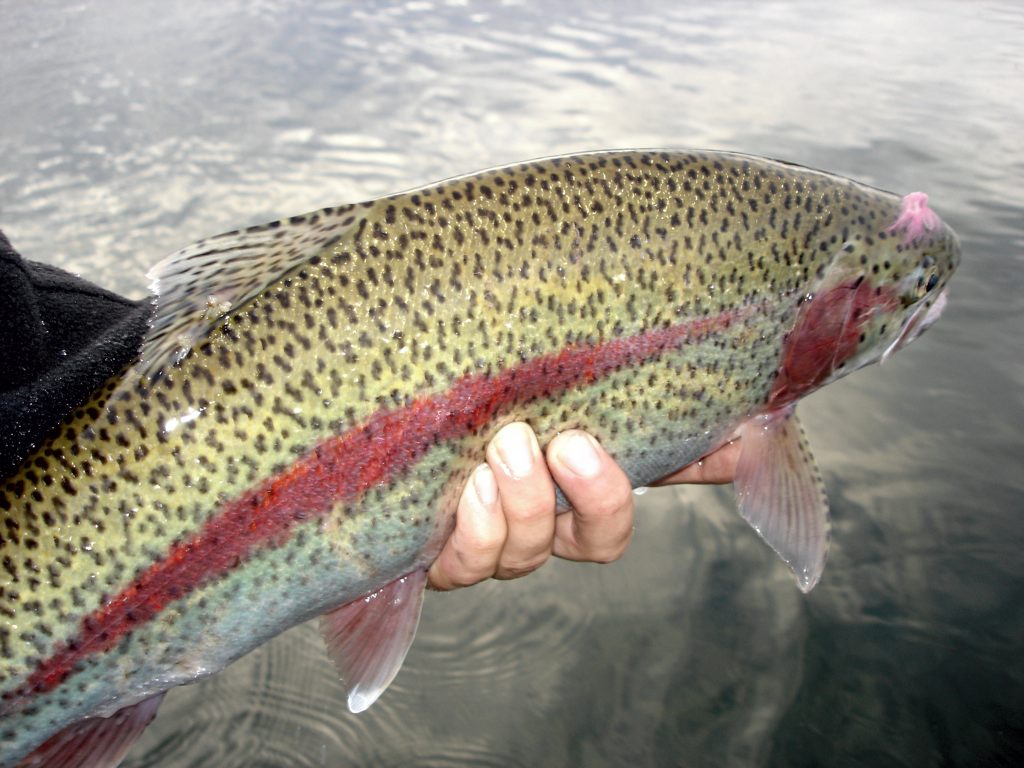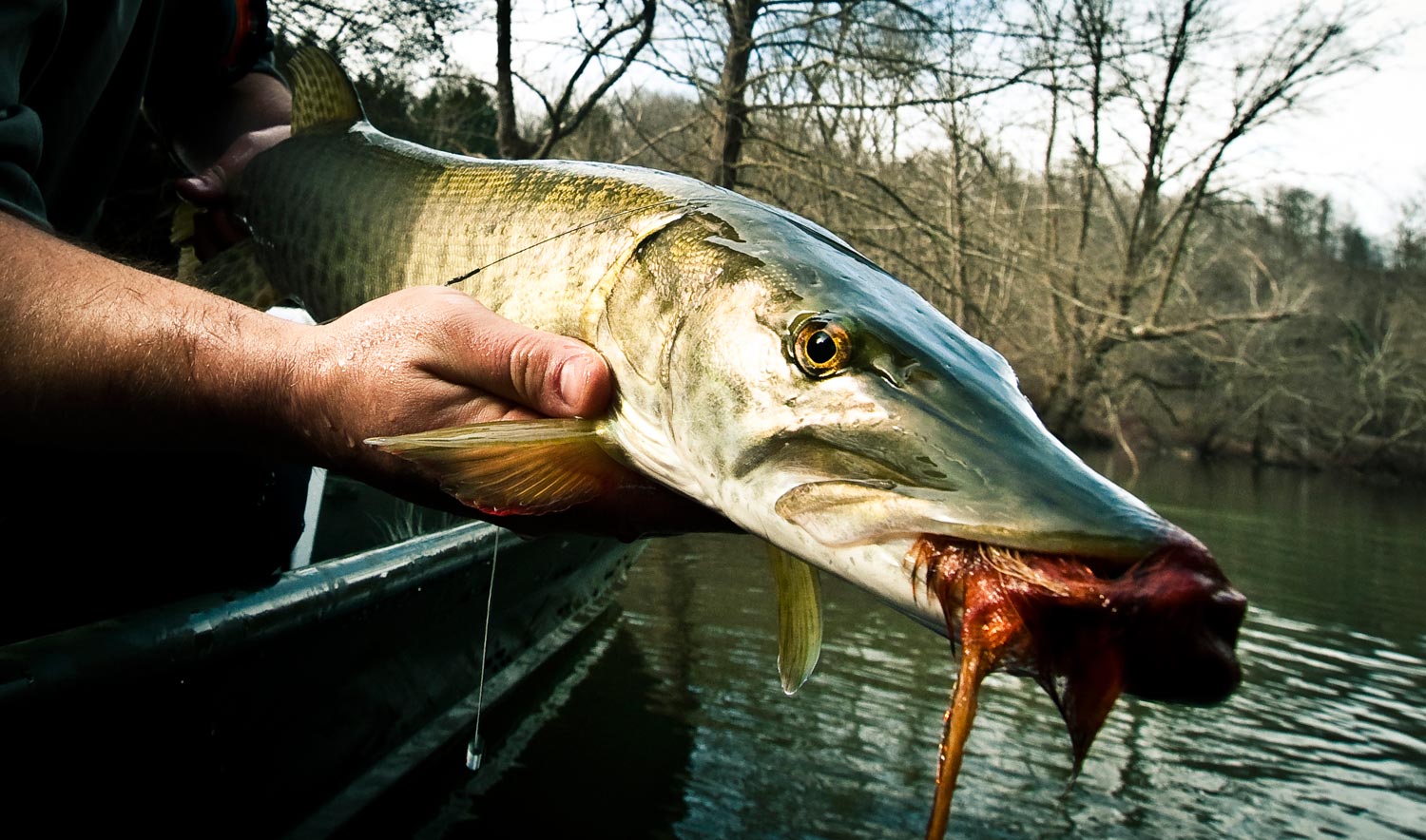“Wood is good”, shouted Sam Cornelius manning the oars, as I concentrated on drifting my flesh pattern against the never ending medley of wood snags along the Togiak River banks in Alaska, back in 2006.
“When ever you see wood, drift your flies as close to it as you can, because fish are usually close by. And don’t worry about getting hung up, we’ve got plenty of flesh flies.”
Sam Cornelius, a veteran guide of the Alaskan Bristol Bay had already guided for numerous lodges for the past nine years when I first met him. He was one fishy dude that consistently put his clients on the most fish at the lodge, so when Sam talked fishing tactics with me, I listened very closely. Sam explained that, “Big trout know to hang around key wood snags in the river because they understand they are natural dead salmon collectors. As the dead salmon pile up during the season and decay overtime, they break apart and provide a constant supply of drifting flesh for the trout, char and grayling to eat.” Just as those words left Sam’s mouth, my indicator disappeared under the surface and I set the hook. Then I felt the weight of a hefty leorpard rainbow shaking its big head at the end of my line, and I replied with a big grin on my face saying, “Ah ha…, point taken Sam.” After landing the beautiful twenty-plus inch fish taken from a wood snag, we snapped a quick photo at the boat and released the fat hen back in the water.
Sam took a big swig off his warm can of Bud Light, courtesy of the Lodge and said, “good job pick-nic, get ready for the giant snag downstream coming up river right.” Sam had took it upon himself to give me the nickname pick-nic, because of my unfamiliar southern accent he was not accustom to hearing living in the northwest. When he first heard me speak, he told me that he pictured me back home in Georgia, saying to my clients, “lets break for lunch boys, and have us a pick-nic”. To this day, when we chat he always calls me by that nickname. Anyways, getting back to the story, Sam continued talking about the next snag with overwhelming excitement in his voice. As we approached within casting distance, he said, “I’ve been helping this particular snag out for the past couple weeks by dropping off all my clients fileted salmon carcasses in it.” As I readied myself for a good presentation along the snag, I saw what looked like a dead salmon cemetary. There were more salmon carcasses in that snag than wood. I replied, “Holy crap Sam, your not kidding are you?” Heck no, Sam proclaimed, laughing out loud like a kid. “There’s nothing wrong with making a honey hole every now and then. I did this last year in this same area, and we landed a 14 pound rainbow at the end of the season. Don’t let me catch you fishing it with your clients though, this is my honey hole. I suggest you make one or two of these of your own. They’re a saving grace when you get clients with exceptional LOFT.”
Sam loved complementing clients about their loft. Especially since most of our clients were high management bankers, oil tycoons and fortune 500 company CEO’s who fished very little. They almost always mistakingly took having exceptional “loft” as a compliment. For those of you who don’t know the guide jargon of the word loft, it’s an acronym for, Lack of F@#$ing Talent. I always found it insane how comfortable Sam was at telling clients how much loft they had. He loved hearing them reply with thanks, and then he would gracefully turn his back to us and grin from ear to ear. You had to be there to appreciate his eloquent timing and ability to pick out the right clients to say it to.
Sam went on explaining to me that the smart trout in Alaska don’t even take the time to wait for the pieces of flesh to fall off the salmon carcasses naturally out of snags. He said, “the seasoned trout will set up shop close to a prime snag, and stay there day after day, eagerly taking bites out of the carcasses at leisure, until they are gorged. That’s one of the ways trout here grow to such epic sizes.” Those comments had me in awe and picturing the big leopard rainbows feeding like sharks on the Discovery channel, biting huge hunks of meat off teaser lines. A few seconds later my indicator dunked under again and I set the hook. Unfortunately, this time it’s wasn’t a bite. My fly was snagged in the wood and I had to break off. Sam laughed out loud boldly and said,”don’t worry pick-nic”, pulling a zip-lock bag out of his pocket that was half full of flesh flies. He handed me one, and said, “get used to this happening with clients, and by the way, you’re on tying duties this evening when we get back to camp.” That evening we took several fat rainbows out of wood snags, enjoying our time immensely off the clock.
That’s just one fly fishing memory of mine that demonstrates how effective it can be to target wood. Fishing wood isn’t just a good idea in Alaska though. It works just about anywhere, on all types of water and for numerous species of fish. I catch tons of trout all across the continental U-S-of-A fishing wood, whether I’m drifting dries against it, hunking streamers at it or drifting nymphs adjacent to it. Recently, my buddies and I caught numerous musky in West Virginia working our streamers through wood snags. Musky love wood. I’ve also landed boo-koos of black bass on lakes and rivers fishing wood all over the Southeastern United States.
So that poses the question, why is wood such a magnet for so many species of fish? It’s a magnet for multiple reasons. For one, wood provides perfect camouflage for predatory fish to hide out of sight, waiting to ambush prey. Wood also attracts multiple kinds of forage food that larger fish feed on, because of the habitat and food wood provides, and for trout particularly, wood provides sanctuaries, such as natural eddies and current breaks. Both of which are used by trout so they can avoid using up excessive amounts of energy to hold in moving water. Last but not least in importance, wood provides fish quick access to cover for safety when they feel threatened. Yes, in deed, wood is good. Fish it every chance you get when your out fly fishing. Unless, it’s out of water of course. Wood generally will always hold fish that you stand a very good chance at catching, if you take the time to fish it.
Keep it Reel,
Kent Klewein Gink & Gasoline www.ginkandgasoline.com hookups@ginkandgasoline.com Sign Up For Our Weekly Newsletter!



Great advice…every fish I like to catch can be found hanging out on sunken wood.